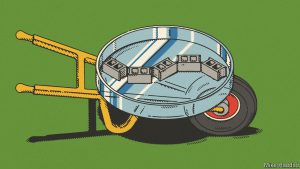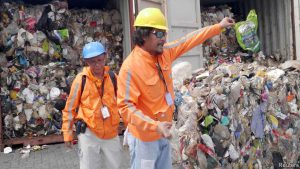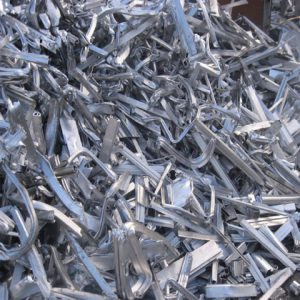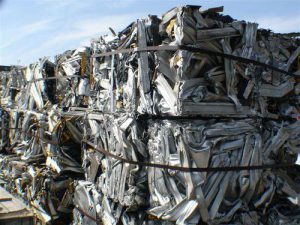Author: Amy Cheng
26 February, 2020

The Victorian government is introducing a suite of sweeping recycling reforms.
The state government will invest more than $300 million in an overhaul of Victoria’s recycling system, bringing in the largest package of recycling reforms in the state’s history.
The government on Wednesday released its circular economy strategy Recycling Victoria, a 10-year plan for improving Victoria’s recycling sector and reducing waste to landfill.
The strategy includes $71.4 million to tackle waste crime, such as illegal dumping and stockpiling, and will deal with high-risk sites and high-risk substances.
A dedicated Waste Crime Prevention Inspectorate will be established within the Environment Protection Authority to work closely with WorkSafe Victoria, emergency service agencies, councils and other regulators.
The government will also provide $14.6 million to support local projects that boost recycling, and a further $1.8 million to support charities in handling waste from charitable donations.
“With this investment, we’ll drive new ideas and innovation. But most importantly, we’ll create new Victorian jobs,” Premier Daniel Andrews said.
Lily D’Ambrosio, Minister for Energy, Environment and Climate Change, said it was the largest package of recycling reforms and investment in Victoria’s history.
“It will revolutionise household recycling, drive business innovation and create jobs of the future. Most importantly, it will give Victorians a truly circular economy and recycling system they can rely on.”
Improving the way businesses recycle
Earlier this week, the state government also announced $96.5 million to help local businesses better process recyclable materials.
Included in this investment is $28 million for businesses to invest in infrastructure to sort and reprocess recyclables for use in manufacturing.
This will double the current funding for businesses through the Recycling Victoria Infrastructure Fund, bringing the total to $56 million.
There will be $30 million spent on grants to create new products from recycled materials, such as glass, plastic, electronic waste, organics, concrete, brick and rubber.
Grants of $10 million will also be issued to help businesses improve resource efficiency, reduce waste and increase recycling in their daily operations.
A new $7 million Business Innovation Centre will be established to develop new technologies and creative solutions to waste challenges, bringing together council, industry and universities.
Processors will have access to $10 million of waste-to-energy initiatives for waste that cannot be recycled, in an effort to reduce the amount of waste sent to landfill.
To treat hazardous waste, an investment of $11.5 million will go towards protecting the community from illegal chemical stockpiles.
Reducing waste to landfill
The government will also invest $129 million into a container deposit scheme and four-bin system to improve the way the state collects and sorts recyclables.
The container deposit scheme is expected to begin in 2023, and will be designed and delivered in close consultation with councils and industry.
The roll out of four colour-coded bins to homes will begin next year:
- Purple lid – glass recycling
- Green lid – food and garden organics
- Yellow lid – plastic, metal and paper recycling
- Red lid – household waste
Special arrangements will be made for remote regional households and people in apartments to ensure nobody misses out.
The government is collecting glass separately to ensure it is recycled effectively, and that jars and bottles can be transformed multiple times into products, such as roads and footpaths.
“Separate glass collection will also make recovery of other recyclables – like plastic, metal and paper – simpler, with the food and organic bin significantly reducing the amount of waste going to landfill,” the premier said.
The government will also increase landfill levies, saying it currently has the lowest charges for municipal and industrial waste in the country.
“That means a shift in the landfill levy for metropolitan household and business waste to $125.90 per tonne over the next three years. Proportional increases will be reflected at regional landfills,” the strategy says.
Ruth Gstrein, Deputy President (Rural) of the Municipal Association of Victoria, welcomed the state’s investment into the industry.
“We look forward to more information on how this funding will be allocated, noting that service models will need to be tailored to meet different community needs,” she said.
“It will be critical to provide councils with funding and implementation support as well as timeframes that enable appropriate infrastructure to be put in place.”
Calls for NSW to step up
NSW opposition environment spokeswoman Kate Washington called on the NSW government to match Victoria’s investment by using funds from the NSW waste levy.
“Less than 20 per cent of the revenue collected from the waste levy is spent on recycling and waste reduction,” she said.
“NSW residents need to ask why our government is so slow to act when it comes to protecting the environment, supporting our local recycling industry and creating local jobs.”
Mixed reactions
The Waste Resource Recovery of Australia said Victoria was leading the way.
“WMRR is pleased that the Victorian Government has flagged infrastructure investment as part of this package,” CEO Gayle Sloan said.
However the Australian Industry Group expressed concern about the impact of increased landfill charges, which would flow through to the recycling industry.
“The higher landfill levy will increase costs at a difficult time, including for businesses in the recycling industry,” Ai Group’s Victorian head Tim Piper said.
“Raising the costs of recycling will impede the important task of raising levels of recycling in Victoria because it will make recycling less profitable for the industry.”
Link: https://www.governmentnews.com.au/victorias-ten-year-plan-to-boost-recycling/





